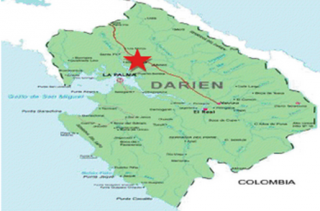Zapallal, Panama
![]()
![]()
![]()
![]()
![]()
![]()
![]() Click on Programs to learn more about their work in this community
Click on Programs to learn more about their work in this community
General Information

| Population* | 900-1000 |
| Number of homes | 200 |
| Avg # of people per home | 4 |
| Electricity | 80% have electricity |
| Corregimiento | Santa Fe |
| District | Chepigana |
| Corresponding Health Center | Santa Fe |
| Distance from compounds | 1.5 hours (stop at SENAFRONT) |
| Road conditions | Normal |
* Population does not reflect how many patients will be seen on medical
brigades as many people from surrounding communities come seeking
Medical Brigades medical attention.
Expressed Needs and Capacities
The community has expressed various strengths. It is made up of a young population with a high
capacity. In addition, there’s a very large agricultural force that the majority of the men dedicate
their time to. Within Zapallal exists a strong sense of culture and traditional folkloric dances that are
practiced throughout the community. While they possess many strong characteristics, members of
the community have expressed that organization in the town is very weak, therefore making it
difficult to achieve anything on a community-wide level.
Zapallal’s educational system includes a primary and secondary school, both centrally located. The primary school contains 211 students and 16 teachers. While exact data on the secondary school was not available at the time this interview was conducted, it is known to be considerably larger than the elementary. Approximately 88% of the community is literate.
Zapallal has a new water system that was installed around March of 2012. The water is collected from the Chucunaque river, treated in Arimae, and then runs through Zapallal as well as several other communities throughout north Darien. The water is supposed to run on a regular basis during the rainy season, but goes out from time to time. As the system was very new at the time of the interview, it is unknown how the water will run during the dry season. Most of the population is connected to the system, with the majority of those who are not living in the newest sector of town. The water is chlorinated, but it is not known how often. Families also boil or chlorinate water in their own homes to further purify it. Zapallal has a water committee.
Zapallal does not have a Centro de Salud (health center). The closest center is located in Santa Fe, five minutes away driving. There are no doctors or other types of medical practitioners located within the town. People also visit Santa Fe for any dental needs. Medical rounds are made every year to year and a half by Global Brigades.
The most common illnesses found throughout the community are the cold, the flu, and high blood pressure. Around 90% of all homes have pit latrines. Almost all households have gas stoves and most homes have cement floors with wood walls and metal roofs. The community has no health committee.
For the males in the community, the main forms of employment are agriculture and raising livestock, along with a small portion that work in wood extraction. The women mainly take care of the home. People raise chickens for their own personal consumption, as well as pigs which they also sell. The main crops produced in Zapallal are corn and rice. Local businesses in the area consist of three kiosks, six small stores, as well as a few people that sell food from their trucks. The community has no access to credit within the town, however it is possible to obtain access to credit in other communities. Nonetheless, due to finances and other circumstances, it is not always easy to take out a loan. While they have not received any specific business education from outside sources, the organization INADEH gave a technical training course that 15-18 community members attended several years ago.
A waste collection system is in place in Zapallal, which passes by to collect garbage once a week. Unfortunately this system is not efficient and the car does not always pass by. As a result, many people bury or burn their trash. They have never had any waste management training. In 2007 Peace Corps volunteers gave talks about sustainable agriculture using organic composts and family gardens. Almost all farmers use chemical products on their crops. Data on the use of organic products was not available. There is no environmental committee in the community.
Zapallal has one lawyer that lives within the community. In addition, there are also available lawyers in Metetí and La Palma. In spite of this, many people still have trouble receiving legal access. The main legal issues are migration, legal marriage, and government-provided food stipends.
Currently there is a mayor that lives in another community but works in Zapallal. Besides this, the community follows the typical administrative structure of Panama.
Peace Corps is the only organization that currently works in Zapallal.
The Medical/Dental program has been working in Zapallal for several years and the Human Rights as well as the Business team are currently working in the community.
Source of information: Key informant interview
Date of interview: October 9th, 2012
Last Visited: February 25, 2014
Last updated: February 26, 2015